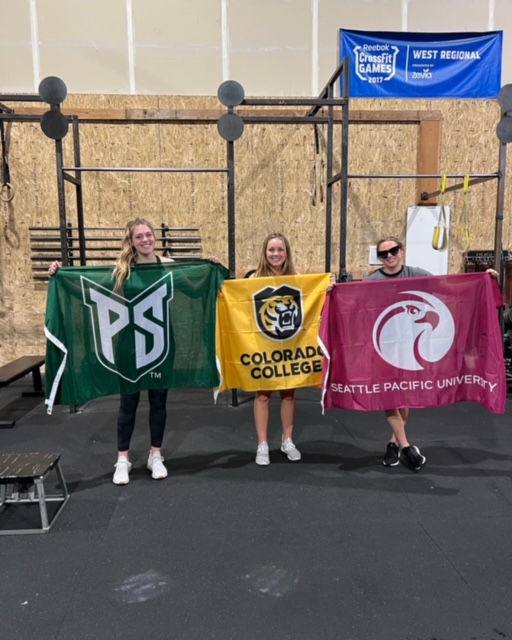
Disclaimer: I have never played soccer in my life. The first time I remember seeing a soccer ball was in 7th grade. Kids were playing at recess and I had no idea of how to kick a soccer ball or the rules of the game. The sport itself didn’t interest me at all until after college.I started OC Sports Performance and started training soccer players. At this point I immersed myself in the sport of soccer and the condition demands of soccer. Learning as much as possible. Asking questions of the athletes/coaches I knew, watching games both in person and on tv. The information presented below is based on eight years of training soccer players.
The thought process with soccer is quite simple. On average, players run between seven and nine miles a game.
Thus, their fitness level needs to be able to power them for those seven to nine miles. I agree with this thought process, and that if the demand of the sport requires players to run those distances, then as coaches/trainers, we need to help players to be capable of running that amount.
The aspect that I strongly disagree with is how to go about reaching that goal. Constantly running is not going to translate into having a greater soccer endurance. This idea is a bit controversial, so let me explain.
If you watch a soccer match, the players will total a lot of miles running, as the game is rarely ever stagnant. However, if you look closer at the type of running, the player is mainly sprinting for short intervals, followed by active rest (jogging). As a strength and conditioning coach, I am focusing purely on the physical demands of the sport, and that’s it. Soccer, regardless of being in a practice or game setting, doesn’t require players to run 100 yards, 200 yards, or 300 yards at a time. Instead, soccer requires a player to maximally sprint for 15-30 yards and then actively rest to shift with the play and/or jog back into their position.
If the purpose of training is to prepare for a game, then how does running 5 to 7 miles continuously translate to a match of alternating between sprints and jogging?
Simply enough, it doesn’t. Steady paced endurance running is not what happens in the sport. During a game, an athlete needs to sprint, exerting explosive power, and then be able to efficiently throttle down and get back into position or move into a new position.
From a physical standpoint, the sport is actually intervals of 15 seconds of hard work (sprinting), and then somewhere between 45 to 90 seconds of active rest (jogging).
Why does this physical analyzation of the sport matter?
To build a good soccer player, you aren’t going to build them by training them like a marathon or cross country athlete. If you choose to train soccer players like endurance athletes, then you have to be prepared for the injuries that frequently arise in those sports where athletes are running constantly and are injured (chronic overuse injuries).
What is a better plan to train soccer players?
First, you can not be in top shape year around – sorry, you just can’t.
However, what you can do is build your aerobic capacity. With a well developed aerobic capacity, athletes are able to get in shape faster when needed. Aerobic capacity may be commonly referred to as long slow distance and/or cardiac output method. This method stimulates the eccentric cardiac hypertrophy through volume overload and increases the left ventricular cavity volume. Basically, it’s a fancy way of saying it builds your heart’s capacity to pump oxygenated blood strongly and efficiently throughout the body. Aerobic training can be implemented 1-3x a week. For aerobic training, using a heart rate monitor is strongly advised. The heart rate between 130 beats per minute and 150 beats per minute. If a heart rate monitor is inaccessible, you should be able to speak during this type training, referred to as a “conversational pace”.
Aerobic training can be implemented year round. The conditioning pyramid is only as tall as the base, and this is an efficient way to build and reinforce that base.
Aerobic training can be completed using Concept 2 Equipment,Assault bike, jumping rope, and simply by running. We prefer to use something different than running because soccer athletes have been running their whole lives. Expecting more running to help them is similar to the definition of insanity (doing the same thing over and over and expecting different results).
Second, lifting weights will help you be in shape and will give you the ability to recover faster.
Why is strength training so valuable? Let me provide an example: Let’s say player A can squat 100 pounds and player B can squat 300lbs. Player A is tasked to squat 50 pounds 100 times. Player B is also tasked to squat 50 pounds 100 times. Which of the two is going to have an easier time getting the task completed? The Stronger Player B and it isn’t even close. Player A is working at 50% of their one-rep max. Player B is working at 16.9% of their one rep max. If you don’t believe that Player B is going to complete the task faster, more efficiently, and safer, then you need a bit of a wake up call.
The motion of running creates significantly of times more force than your body weight. Being strong allows you to absorb this force, spend less time on the ground, and overall have less chances of getting injured. Without strength training, you are asking for injuries of both non-contact (the worst kind) and contact.
With an effective strength training program, a soccer coach can cut the running by 30% or more!
Less running means more time on the ball during practices. Based on what I have learned by training soccer players of all body compositions, coupling strength training with less running minimizes the likelihood of an injury significantly.
The third and final piece includes running tasks that look more similar to the sport, and cutting out running as punishment.
As discussed earlier, the sport of soccer is a sprint followed by active rest. “Sport Specific” training, (which is a topic for another day) then condition similar to the demands of soccer.
In multiple publications, sport science suggests using sprint intervals. At OC in the OC Sports Performance Program, we like to implement a blend of sprints on the Concept 2 Bike, Concept 2 Rower, Concept 2 Ski Erg, and Assault bike, working between ten and sixty seconds, with an active rest (light pedaling, or light rowing/skiing/etc.) and then repeat. Typically, we use these types of methods 1-2x a week depending on the seasonal demands of the athlete.
Conditioning as punishment gives you exhausted athletes and teaches the athletes to “slog” through work; neither of which help the athlete’s performance.
I am not debating the fact that punishment for misbehavior is necessary. If you need to punish the athlete for misbehavior, choose something that doesn’t put them at a greater risk of injury and doesn’t hurt their performance.
OC Sports Performance has worked with all of these college soccer players (Tayla Wheeler, Megan Cornett, Jaz Chapman, Kylee Roath, Kaylie Nelson, amongst many others) and we continue to work with them even as they finish up their college careers. I firmly believe in the value of discovering common trends, and then exploring why those trends exist. All of these college soccer players had few things in common: they trained at OC Sports Performance, they played club soccer with Bend FC Timbers and they trusted the process. These athletes started they trusted OC Sports Performance, at the time they started there wasn’t numerous athletes to point to as proof. These athletes bought in and reaped the success.
This class of athletes have gone on to have very successful collegiate careers, filled with a lot of playing time and very minimal injuries. Success is the result of the system that trains it, and the sooner the soccer world realizes training is not just running for miles, the more competitive and entertaining the sport will be.
Frequently asked Questions Concerning Soccer Training:
- How often should an athlete in season strength training and how often out of season?
- In Season I recommend 3x a week. Two Dynamic effort sessions, with one max effort session that rotates weekly between upper and lower body. I have trained athletes before games especially the upper body with zero negative effects. Some of the athletes actually preferred doing it that way. This is the minimum to ensure the athlete stays strong during the season.
- Out of season – 5-6x a week. Out of season is the time to focus on making strength gains to improve as an athlete. It is not the time to worry about “being in shape”. If you are training correctly you are always in good enough shape. Out of season, focus on doing aerobic training and if you need to play hard you will be able to.
- Is training the upper body really necessary for soccer players?
- Yes! If you want to be as strong as explosive as possible you can’t do it with an imbalanced body. The ability to withstand contact, head balls, throw in, etc are all dependent on upper body strength. Athletes that can do the Flip Throw in which seems to be a huge advantage. Flip throw in is utilizing a ton of upper body strength. Upper body strength helps every throw in be more accurate and more powerful. You need to train the neck as well – at the very least include shrugs.
- You mentioned not using running as punishment why?
- I don’t believe you should punish someone with something that affects their performance negatively. Running your players because they are late makes them perform worse. I 100% agree you need discipline. There are other ways to punish someone that doesn’t involve teaching them to run slower.
- A coach can cut out 30% of the conditioning work, what would they do with the extra time in practice?
- Work on soccer – improve the players understanding of the game, improve their technical skills. Make them better soccer players. Coach soccer!
- We have always focused on running in our soccer program – why would we want to change?
- Alexander Graham Bell invented the telephone he probably didn’t think everyone would carry a phone, but that is what is optimal now. Everyone has a cell phone. Carrying a phone with them everywhere they go – we change when we find something that works better.
- I think the goal of any legit strength and conditioning program is to limit the non contact injuries. How do you avoid non contact injuries? Make players stronger. Keep athletes fresh by limiting running.
- If a program has several ACL injuries a year(#1 injury for soccer players) that are non contact injuries then that is a problem. These injuries are preventable with the correct training.
- You talk about the 1% – what are you referring to?
- 1% of the population is going to have success training with any program. You can pick 1 person out of 100 that had success with the XYZ program. And that is ultimately who everyone points to when they say that program works. Take a program that produces year in and year out – that is the program that is more likely optimal because it is a system that is producing results not just an outlier. Examples of the physical outliers: Sam Mewis is 6 feet tall and Crystal Dunn is 5’1”. These are physical outliers but both have success playing professional women’s soccer.
- How do the college girls that you train do in their conditioning tests when they go to college?
- The athletes finish in the top 1-3% of their teams, even though they don’t run all summer long. Our athletes play their sport (which is encouraged), and get brutally strong. The athletes are fresh to play and start the college season. Unfortunately, their teammates are already slower and weaker from constantly conditioning by running all summer long.
- You talk about dragging sleds for soccer players. Why does this work?
- It teaches the athletes to be faster. OC Sports Performance has done this experiment with the athletes: put a 45# plate on the sled and time their 75meter walk. Then add weight, and they go faster. Add more weight and go faster again. We continue on this path until the athlete can’t go faster. The athlete rests between trips. When the athlete is ready again or until their heart rate drops down somewhere between 120-130 beats per minute. Why does this work? It works because we are creating optimal resistance and are speeding the player up. The speed barrier happens when you just run, with no other stimulation. The sled used in this fashion to overcome the speed barrier. (Full Disclosure: the method was taken from Louie Simmons of Westside Barbell).
- A sled has been mentioned for building aerobic capacity. How exactly?
- To build the aerobic capacity of an athlete we need to train at least 30 minutes, and we need to maintain a heart rate of 130-150 beats per minute. Hook the athlete up to the sled and have them drag it, we can train their aerobic capacity, and at the same time put a ton of work into their hamstrings, glutes and low back. This extra volume makes the athlete significantly more durable – also prevents the injuries that you see while running.
- Wait so you aren’t running with the sled?
- No, we don’t like the risk vs reward of running with a weight sled. Running with a sled puts a ton of stress in the achilles. Athletes that run a lot are already at a higher risk of injury, walk with the sled and “power” walk. I advise athletes to walk as if they have just pissed off their mom and she is chasing after them. It is walking with purpose. Try to get to the destination fast, walking heel to toe, “pulling with the heel” on each step.
Thanks for checking out OC in Bend, Oregon. OC is Central Oregon’s premier CrossFit, Personal Training and Sports Performance gym in Bend, Oregon.

